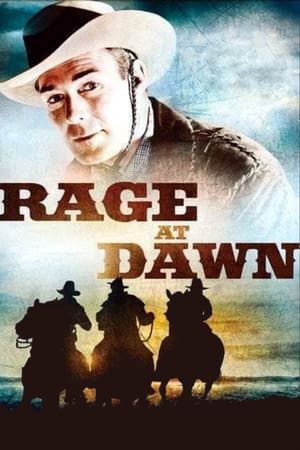
Rage at Dawn
Would it have made a difference knowing what I really am? This is the true story of the Reno brothers....Clint, a respected farmer, and Frank, Simeon, John, and Bill...who were the first train robbers in American history. Looting, burning and killing, this infamous clan rode through the middle border states setting the pattern for the great outlaw bands which were to follow: the James boys, the Daltons and the Youngers. The Year 1866, the place is Southern Indiana. Well not quite Indiana exactly as the film was shot on location at Columbia State Historic Park, and apparently some Western purists see this as a blip on the movies Western worth! (hmm) I don't conspire to that at all since what I want from a B Western such as this is a lush Western feel, with identifiable good and bad guys. I feel that director Tim Whelan achieves the latter and his cinematographer Ray Rennahan achieves the former. Rage At Dawn does have a sense of seen it all before about it, but that's not in detriment to it because it's possibly a picture that has been copied more than it has copied from others before it. It's nice to have a real solid Western using a proper and reliable story to work from. While using top professional actors like Forrest Tucker and J. Carrol Naish to be bad fellas obviously helps the piece; as does having the genre legend that is Randolph Scott as your ebullient good guy. Scott fans who haven't seen the picture should be advised, tho, that he isn't actually in the film for the first third. But as always he's worth the wait and it's clever of Whelan to keep us waiting whilst fully forming the Reno legend. With some nicely staged set pieces (the train scenes are well worth our time) and a fabulously dark turn of events in the finale that goes against the grain (shadow play supreme at work), this becomes a genre film well worth taking a peek at. 7/10 Footnote: DVD/Public Domain prints of the film are low on quality and do not do justice to the location and costuming. The best print I have seen of this film was on Commercial British TV. Caution is advised on where you source the film from.
